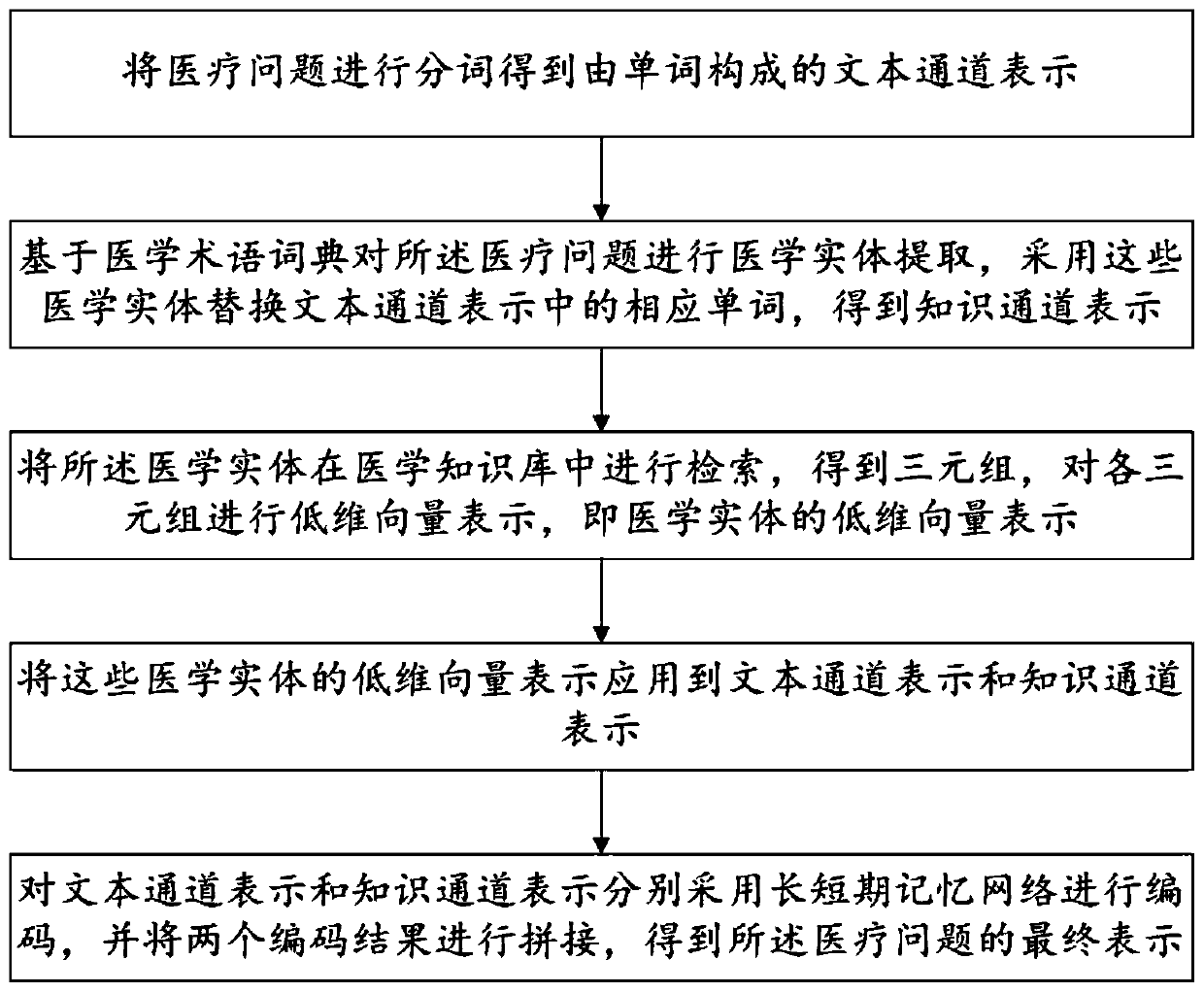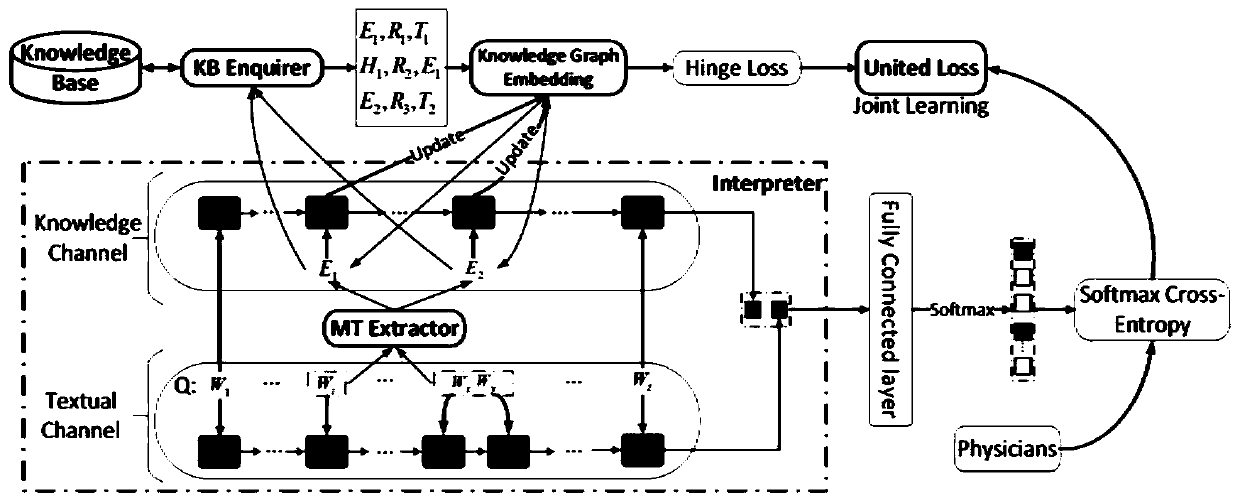Knowledge-based deep medical problem routing method and system
A problem and knowledge technology, applied in the field of knowledge-based in-depth medical problem routing methods and systems, can solve problems such as misdiagnosis
- Summary
- Abstract
- Description
- Claims
- Application Information
AI Technical Summary
Problems solved by technology
Method used
Image
Examples
Embodiment 1
[0035] The purpose of this embodiment is to seek a knowledge matching method between questions and doctors based on deep learning and knowledge maps. The name is Deep Medical Question Routing (referred to as DMQR). The overall structure of the model is as follows image 3 shown.
[0036] In order to achieve the above purpose, this embodiment discloses a knowledge-based in-depth medical problem routing method, such as figure 1 shown, including the following steps:
[0037] Step 1: Receive training data, which includes paired training medical questions and corresponding doctor data;
[0038] Step 2: Low-dimensional vector representation of all medical problems in the training data;
[0039] Step 3: Take the low-dimensional vector representation of the training medical problem as input, and the corresponding doctor problem as output, train the deep neural network, and obtain the deep medical problem routing model;
[0040] Step 4: Receive test medical questions and perform low...
Embodiment 2
[0098] The purpose of this embodiment is to provide a knowledge-based in-depth medical problem routing system.
[0099] In order to achieve the above purpose, this embodiment provides a knowledge-based in-depth medical problem routing system, including:
[0100] The model training module receives training data, which includes paired training medical problems and corresponding doctor data; calls the feature representation module to perform low-dimensional vector representation of all medical problems in the training data; the low-dimensional vector representation of the training medical problems Dimensional vector representation as input, corresponding doctor questions as output, training deep neural network, and obtaining deep medical problem routing model;
[0101] The model application module receives the test medical question, calls the feature representation module to perform low-dimensional vector representation; inputs the low-dimensional vector representation of the tes...
Embodiment 3
[0110] The purpose of this embodiment is to provide an electronic device.
[0111] In order to achieve the above object, this embodiment provides an electronic device, including a memory, a processor, and a computer program stored on the memory and operable on the processor, when the processor executes the program, it realizes:
[0112] Step 1: Receive training data, which includes paired training medical questions and corresponding doctor data;
[0113] Step 2: Low-dimensional vector representation of all medical problems in the training data;
[0114] Step 3: Take the low-dimensional vector representation of the training medical problem as input, and the corresponding doctor problem as output, train the deep neural network, and obtain the deep medical problem routing model;
[0115] Step 4: Receive test medical questions and perform low-dimensional vector representation;
[0116] Step 5: Input the low-dimensional vector representation of the test medical question into the ...
PUM
 Login to View More
Login to View More Abstract
Description
Claims
Application Information
 Login to View More
Login to View More - R&D
- Intellectual Property
- Life Sciences
- Materials
- Tech Scout
- Unparalleled Data Quality
- Higher Quality Content
- 60% Fewer Hallucinations
Browse by: Latest US Patents, China's latest patents, Technical Efficacy Thesaurus, Application Domain, Technology Topic, Popular Technical Reports.
© 2025 PatSnap. All rights reserved.Legal|Privacy policy|Modern Slavery Act Transparency Statement|Sitemap|About US| Contact US: help@patsnap.com



